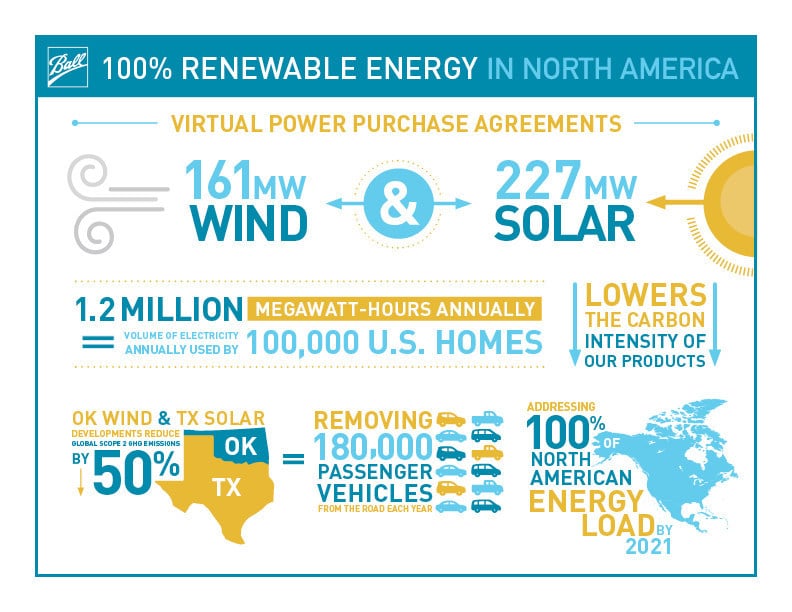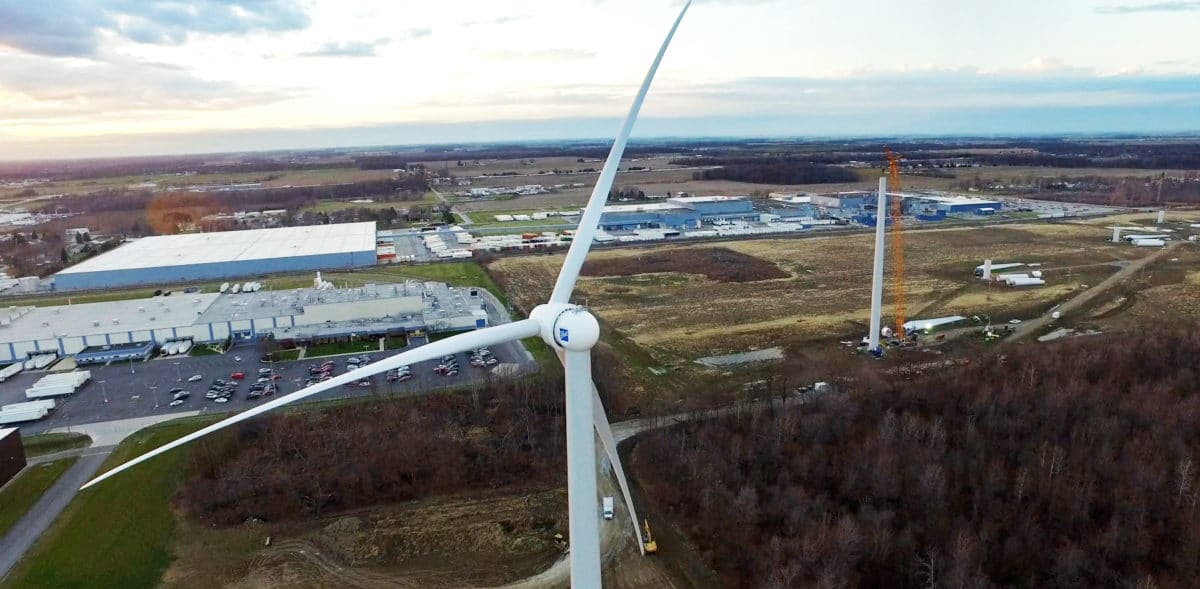When you look at the transition to renewable energy usage with a legislative-based eye, you’d see it as a dauntingly slow process, with two steps forward and one back, and some regions being dragged along by others. The beautiful thing is, the energy transition is driven by more than just legislation, with large corporations frequently stepping up to lead the charge.
Look no further for rapid transition that to Ball Corporation, which has announced the signing of power contracts for a 161 MW wind farm and a 227 MW solar farm. Those agreements together mean that the company will procure 100% of its North American electric load through renewable sources by 2021. It’s also a 5000% growth in renewable commitment, as the company’s only previous renewable investment came via a six-turbine wind plant outside of its Findlay, Ohio, beverage packaging plant.

Not only is this procurement impressive for the electricity offset it it creating, but it instantly vaults Ball to a leading position among corporate renewable energy users in the country. Corporate renewable procurement is a wildly fluctuating market year-by-year, one which reached 6.4 GW in 2018 and is expected to grow in 2019.
And because most of this development is driven by massive tech companies like Microsoft, Facebook and Google, Ball’s commitment is made only more impressive. In 2018, Wal Mart and ExxonMobil led the way in procurement for non-tech companies, with ExxonMobil specifically signing contracts for 575 MW of wind and solar power in Texas. So, while not quite the top dog, 388 MW comfortably places Ball among the biggest non-tech players in buying power from renewables.
While these two power contracts represent the entirety of the company’s North American electrical needs, that doesn’t mean there isn’t more to come. In the release touting the contracts’ signing, John A. Hayes, chairman, president and CEO of Ball was quoted as saying “Utilizing renewable energy is an important lever to further enhance the sustainability credentials of our packaging and we’re exploring similar opportunities across our global footprint.”
This content is protected by copyright and may not be reused. If you want to cooperate with us and would like to reuse some of our content, please contact: editors@pv-magazine.com.









By submitting this form you agree to pv magazine using your data for the purposes of publishing your comment.
Your personal data will only be disclosed or otherwise transmitted to third parties for the purposes of spam filtering or if this is necessary for technical maintenance of the website. Any other transfer to third parties will not take place unless this is justified on the basis of applicable data protection regulations or if pv magazine is legally obliged to do so.
You may revoke this consent at any time with effect for the future, in which case your personal data will be deleted immediately. Otherwise, your data will be deleted if pv magazine has processed your request or the purpose of data storage is fulfilled.
Further information on data privacy can be found in our Data Protection Policy.